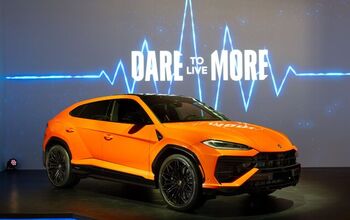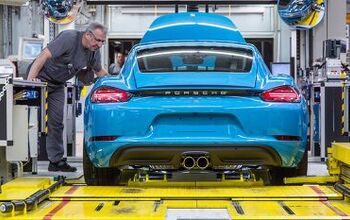Is This Video The End Of Automotive Journalism?

This video, which was sent to me by a particularly reclusive Canadian cyclist, is forty-one minutes long. It was made by a Fisker Karma owner and it contains an exhaustive review of the Karma’s infotainment system. If you aren’t in the market for a Karma, it is virtually unwatchable.
If you are in the market for a Karma, it’s perhaps the most important video you will ever see.
Brian Greenstone is an Austin-based programmer who owns both an Aston Vantage and Fisker Karma. He claims to be an expert on user interface design and he has an award from Apple to support the point. During the course of his video, he comprehensively deconstructs the way the Karma works. Anyone who is even considering a Karma should see the video. It is detailed, specific, and informative. It was also created by someone who paid his own hard-earned money for the vehicle.
Now, for contrast, let’s take a look at Dan Neil’s advertorial:
Neil says:
Meet the world’s MOST INTERESTING CAR! Every square centimeter of the Fisker Karma riots with clarity, and design intent, and vested individuality, and scorn for convention we haven’t seen since the Tucker Torpedo…
After watching Mr. Greenstone show you how the user interface requires a press on the “up” arrow to move “down” the menu and have permission to touch menu items which were clearly visible previous to said up-touching, it’s highly unlikely that you will agree with Mr. Neil about the whole “riots with clarity” business. Aren’t riots usually affairs which, by definition, are short on clarity? But I digress.
The difference in the two videos is clear enough to supply an entire riot’s worth of clarity, actually. Greenstone’s video is meant to demonstrate how a Fisker Karma works. Dan Neil’s video is meant to be an advertisement for Dan Neil first, and perhaps the Karma second. It’s hard to imagine that anyone who is seriously considering the purchase of a Karma would learn anything from watching Mr. Neil pop his collar and fumble through the pronunciation of “gestalt” — but Greenstone’s video should be required watching for any Karma intender.
Greenstone’s Karma video isn’t the only effort of its kind out there. It’s simply one of the most intelligent and thorough videos available. In the years to come, it’s very possible to imagine that most people will bypass TTAC and its competitors and hit the owner videos the way they currently bypass Motor Trend and visit us. What will the future of auto journalism be then? Will we simply aggregate user-generated content in one place? Will we pull clicks solely by having early access to vehicles before the public? How beholden will we all be to the manufacturers when that’s our only way of keeping an audience? Or will your children tune in to the TTAC Hologram channel to watch my son live-blog an escape from the highway patrol in a hydrogen-powered hovercraft?
Karma intenders don’t have to even think about questions like that. For them, as William Gibson once famously said, the future is already here — it’s just not evenly distributed.

More by Jack Baruth
Latest Car Reviews
Read moreLatest Product Reviews
Read moreRecent Comments
- Legacygt It was more than 20 years ago that the Bangle designed BMW sedans started looking a little bit awkward. But the lineup today is chock full of downright ugly vehicles. This is one of them.
- Jeff It does state in this article that Europeans as well as Americans have cooled on EVs. I can see push back from consumers on the 2035 deadline for EVs in Europe and in states like California. I have no problem with manufacturers offering EVs but many for at least now don't want EVs. Maybe GM instead of planning to do away with the Malibu to make more EVs should have offered the Malibu as only a hybrid like Toyota is offering the Camry for 2025. It would cost GM a lot less to offer a hybrid Malibu and it would outsell any EV that plant would produce. I even think GM would increase sales of the Malibu as a hybrid only and more competitive pricing.
- Kwik_Shift_Pro4X I fell asleep looking at that image.
- Verbal Rented a Malibu a while back. It was fine, if a bit gutless.I get that Detroit wants to go all-in on high profit margin SUVs and blinged-out MAGA trucks. Everyone has known for decades that they can't compete on price in the affordable sedan space. So now all of Detroit's sedans are gone except for a couple of Cadillac models.But you'd think that just one of the domestic brands could produce a fun, competitive and affordable sedan. Just one? Please? Anyone? Bueller?
- 3-On-The-Tree I wouldn’t even use Ford as a hearse for fear of being late to my party.

































Comments
Join the conversation
I've had a couple of car stereos over the last 10 years or so that were really annoying to use, to put it mildly. One had a totally confusing menu system that took about 15 presses to get to a simple bass/treble adjustment! Another one locked up constantly, losing all the settings. It took at least 45 minutes to set it up again. It might last 20 minutes more, or two weeks before it locked up again. It turned out the unit was amazingly sensitive to any voltage variation. A big cap lessened the frequency of the lockups, but never resolved it. None of the aggravations of these stereos comes close to the setup in the video. The integration of the climate control into the stereo display makes any cure for the problems pretty much impossible.
I work for a company that designs custom interfaces for electronic systems. Brian Greenstone's analysis is superbly done and a model to be emulated.